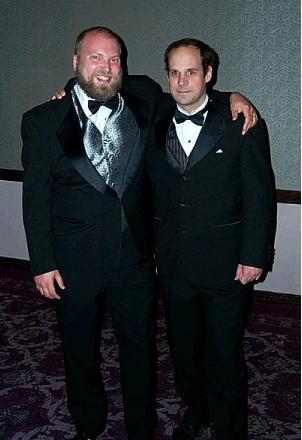 |
|
 |
||||||
Reform: |
||||||
1. Every consonant should have a name that incorporates the sound that it makes. Consider the simple elegance of "B as in 'boy'" and "D as in 'dog.'" When kids learn which sounds go with which letters, or when they sound out their first words, the link between the name of a letter and its sound makes it easy. But what about "C as in 'cat'"? By the sound of it, that ought to be "C as in 'sat.'" C and G can slip by with a reprimand because they at least speak their secondary sounds, but what about W and Y? Consider: "W as in the color 'dhite' and Y as in the color 'wellow.'" Let every consonant speak its own sound when spoken. Which leads us straight to: 2. Every consonant's name should be in the form "[sound]+ee." (For full effect, read the alphabet aloud each time I write it, unless you're at work.) Ay Bee Kee* Dee Ee Fee Gee** Hee Eye Jee Kee Lee Mee Nee Oh Pee Quee* Ree See Tee You Vee Wee Xee* Yee Zee 3. Every vowel should be named by its long sound. The only change here is that U ["you"] becomes ["oo"]. 4. Put the vowels together. If you treat them differently from the other letters, segregate them: 5. Among consonants, acknowledge the relationship between voiced and unvoiced versions of the same sound. B and P make the same basic sound, B with voice and P without it. Their arrangement in the alphabet should recognize their link. One could place voiced & unvoiced consonant twins next to each other, but that can get hard to say (especially if you have a cold). Instead, put all the voiced partners in one spot and the unvoiced in another, in the same order. Then put the unpartnered consonants together. Ay Ee Eye Oh Oo Bee Dee Gee Jee Vee Zee Pee Tee Kee* Chee* Fee See Hee Lee Mee Nee Ree Wee** Yee** (Deservedly missing are Quee and Xee. We could use these letters for "Shee" and "Zhee," if we feel the need for these letters and these sounds.) —JoT |
||||||